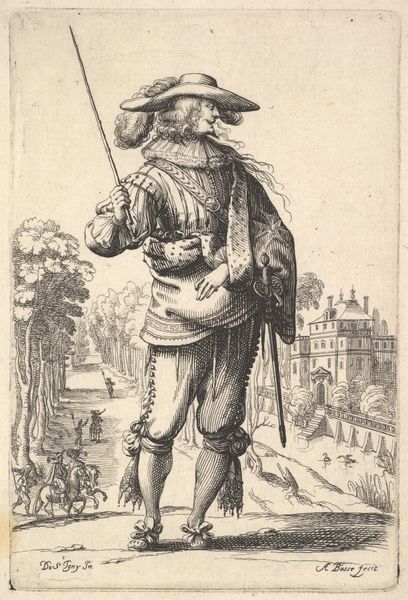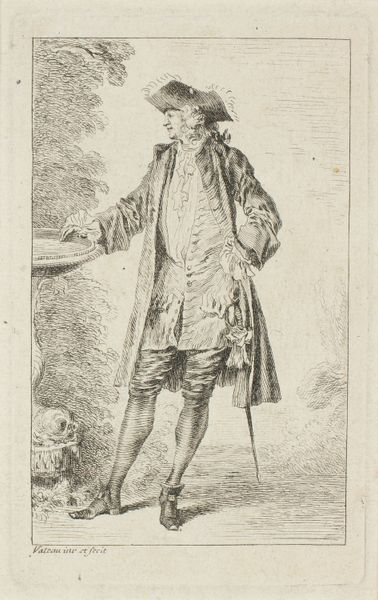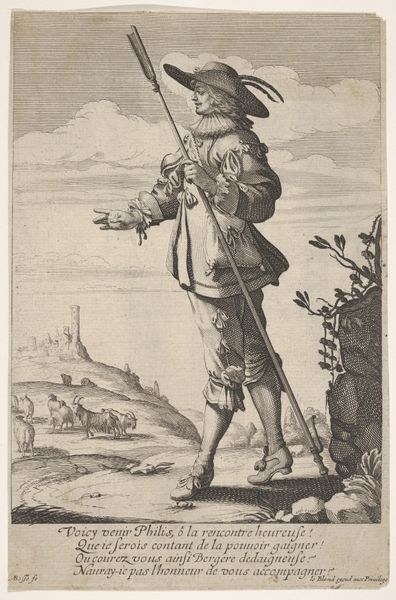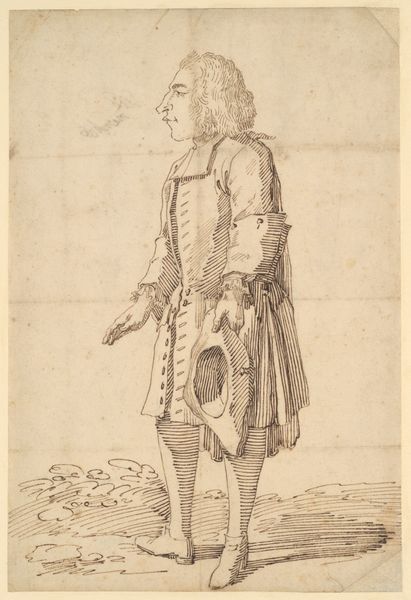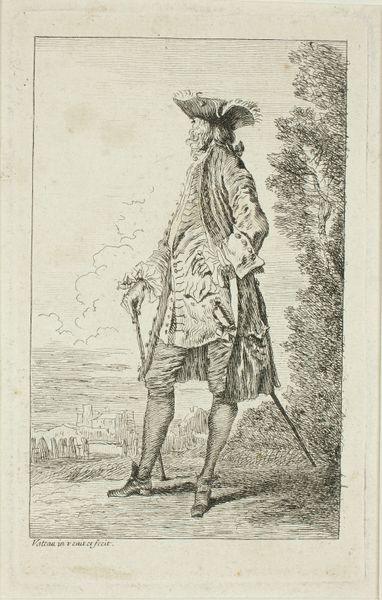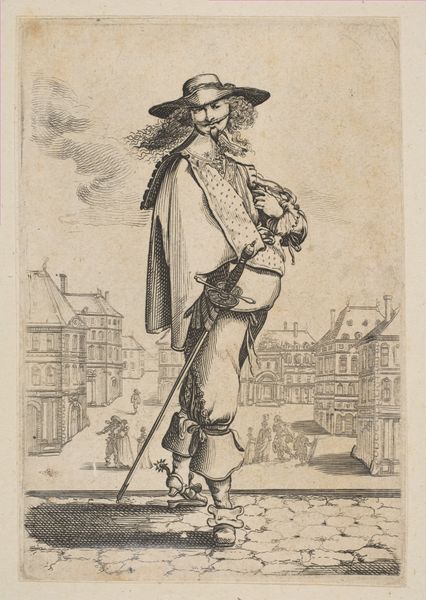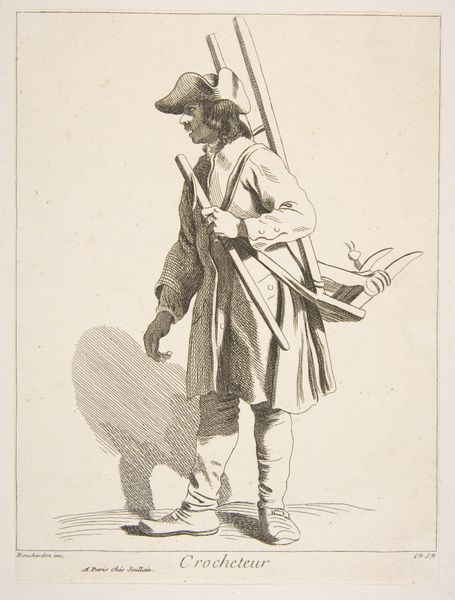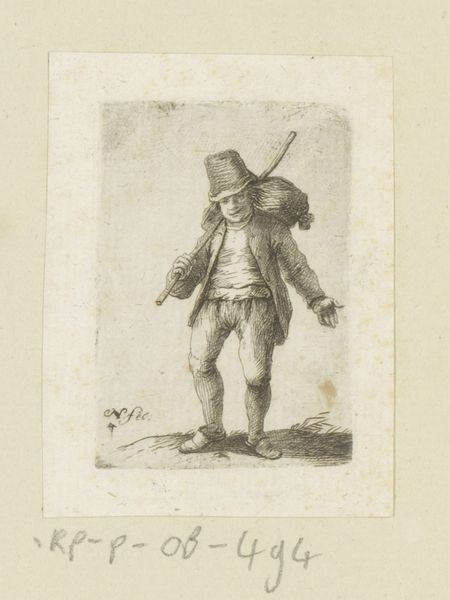
drawing, print, etching, engraving
#
portrait
#
drawing
#
baroque
# print
#
etching
#
genre-painting
#
history-painting
#
engraving
Dimensions: Sheet (trimmed): 5 5/16 × 3 3/4 in. (13.5 × 9.5 cm)
Copyright: Public Domain
Curator: Here we have an etching and engraving from 1629 entitled, “A Man Holding a Crop”. Though its creator is listed as anonymous, it resides now at the Metropolitan Museum of Art. It's quite striking, isn't it? What's your immediate impression? Editor: My eye is drawn to the interplay of light and shadow achieved through cross-hatching. It lends the figure an air of baroque dynamism despite the somewhat static pose. Curator: It's intriguing to consider the crop or the long stick he’s holding as a symbolic extension of power, perhaps even dominion over the landscape, despite being presented as an anonymous figure from everyday life. What are your thoughts? Editor: Yes, but this object also directs the viewer's gaze, creating a strong directional line within the composition. The artist's strategic placement adds visual tension. The man, dressed in attire associated with leisure and authority, oversees the rural setting behind him. The presence of armed men, small horses, and fortified architecture in the background speaks volumes. What do you see? Curator: These secondary figures can be interpreted on various levels. His clothing identifies him as belonging to a particular socio-economic sphere. Those visual codes were readily understood by contemporary viewers, as are class distinctions and expressions of power even today, if you consider logos or trends. It might speak to hierarchies, patronage, or perhaps the relationship between rural labor and elite land ownership. Editor: I see a contrast between the elaborate detailing of the man's costume and the sketchier rendition of the surrounding environment. This technique separates the subject from the world while, at the same time, connecting the protagonist to the rural scene. Curator: A visual representation of that era, I'd agree. So, we’re drawn into speculation about the man's specific place within that society, an ambiguous narrative about societal tensions and expressions of self through style. Editor: Precisely. The print presents a tableau of carefully arranged elements which contribute to its success. It offers visual, even political commentary through relatively simple compositional techniques. Curator: Looking at this from a different perspective reminds me that images and signs always function within cultural memory and reinforce particular views. Editor: I concur, every detail helps us decode the era!
Comments
No comments
Be the first to comment and join the conversation on the ultimate creative platform.
